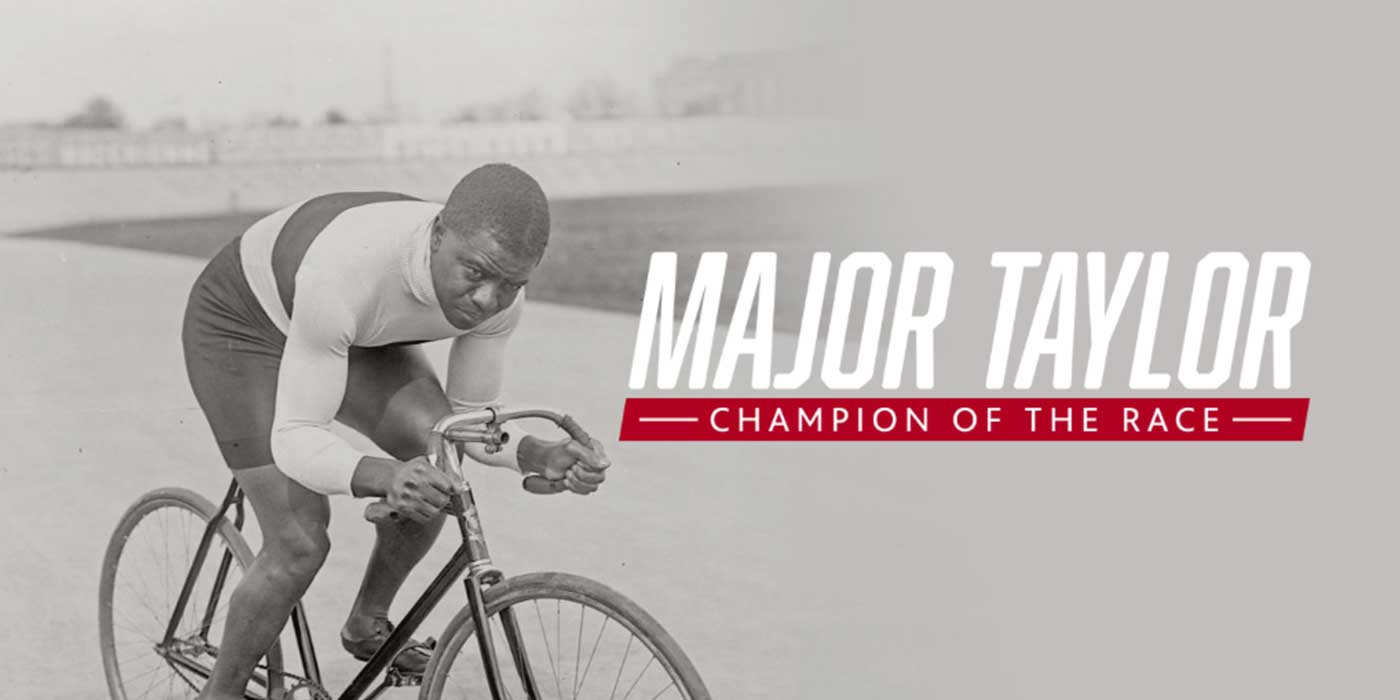Heartland: Major Taylor: Champion of the Race
This fascinating documentary uncovers the legacy of the sporting world's first superstar, a Hoosier who overcame racism to become the undisputed king of the bicycle race track.
For Heartland Film Festival schedule and tickets, please click here.
It can be hard to fathom, but racing was once the most popular sport around the turn off the last century — not car racing or horse racing, but bicycle racing.
Indiana University’s Little 500, memorably portrayed in “Breaking Away,” was once a common type of event. Velodromes could be found near every major city in America and around many parts of the world. Thousands would pack these stadiums to watch men fly around the track at 40 m.p.h.
And Marshall “Major” Taylor was the undisputed king of this sport.
Taylor, who was born in Indianapolis in 1878, has been billed as the ‘first sports superstar,’ as big — or bigger — in his day as Babe Ruth, Michael Jordan or Caitlin Clark was/is in theirs. But as arena bicycle racing has fallen out in favor of long-distance events like the Tour de France, Taylor’s star has been eclipsed to the point few people living today have even heard of him.
“Major Taylor: Champion of the Race” is a small nudge of his legacy back into the spotlight.
Produced by WTIU, the PBS affiliate at Indiana University Bloomington and with the participation of its students, this fascinating documentary uncovers Taylor’s legacy - not just his on-field exploits, but his powerful voice as a writer, poet and civil activist.
Director Todd Gould and his crew assemble an impressive amount of archival photographs and footage of Taylor — impressive, considering his heyday was the late 1800s to about 1909. Brandford Marsalis mellifluously provides the voice of Taylor, reading from his various letters and public statements. Marietta Simpson ably narrates.
Among the astonishing facts we learn: at his zenith, Taylor earned 10 times as much as the baseball stars of his day. He captured virtually every award there was to win in America, including the national championship, and then set sea for Europe and Australia to prove his dominance there, too.
As a Black man he encountered racism everywhere he want, though it came in different forms. “That dreadful monster prejudice,” is how he described it in his own words.
Taylor expressed surprise at his fair treatment in Europe compared to Indiana and Worcester, Mass., where he eventually settled as a teen. And yet the cycling opponents thought nothing of tossing racial epithets at him off the course, and trying to smash his body on it.
On numerous occasions, Taylor suffered devastating injuries after an attack that would put him in the hospital for weeks. One fellow even choked him to unconsciousness after losing, having to be pulled off by police. Never did Taylor retaliate or engage in similar behavior.
He was also noted for his humility and deep faith, the latter of which prevented him from racing on Sundays. Even though he received offers as high as $10,000 for a single Sunday race — about $375,000 in today’s dollars — he stood his ground. Eventually, the entire sport that had often competed on Sundays switched away just to have a chance of Taylor competing.
The archival material is accompanied by dozens of interviews with contemporaneous viewpoints, including Taylor’s great-granddaughter, Karen Brown-Donovan; Indiana State Museum expert Kisha Tandy; sportswriter and academic Kevin Blackistone; biographer Michael Kranish; historian Gary Sailes; and countless others.
The film charts his journey from teenager hired to perform bicycle tricks in front of a shop, all through his illustrious career, and his tragic end, dying in a charity ward in Chicago at the age of 53. Despite his incredible earnings — estimated between $3-5 million — Taylor was not wise with his money and made a number of unfortunate investments that tanked his fortune.
The highs and lows of this extraordinary life are just incredible to contemplate. Such as his first trip to Australia, where he expected to be received as a hated figure or curiosity, and instead was astonished to be greeted by an entire armada of people and ships crowding the port to see him.
What a man. What a life.





